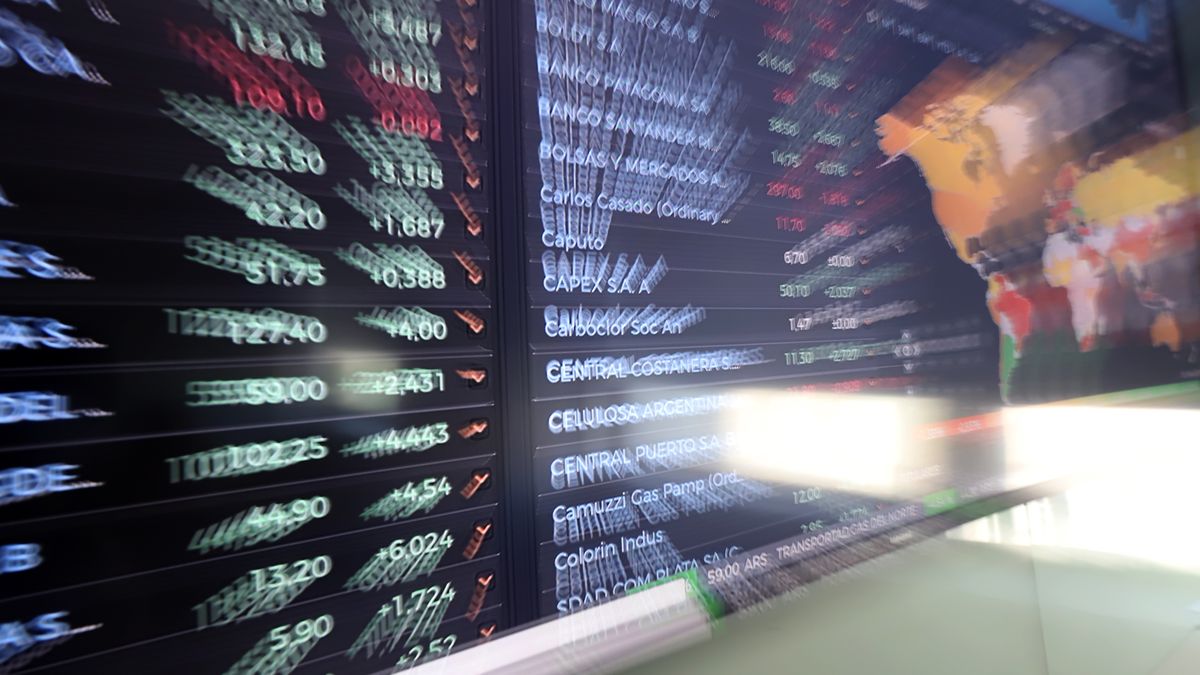Thus, the Argentine papers could not abstract from this negative climate and ended with general declines, such as those of Despegar (-7.7%); Cresud (-5.8%); Free Market (-5.8%); or Loma Negra (-4.7%). Only two stocks avoided the sharp downtrend: Bioceres (+2.7%); and YPF (+1.1%).
In the local stock market, the S&P Merval Index by BYMA lost 1.2%, to 142,941.6 pointsafter the historical record in pesos on Monday at 147,135.35 intraday units. The stock market accumulates a rise of 71.2% in 2022, period in which inflation is around 60%, with a projected 95% for the whole year.
Operators said that the recovery of reserves from the Central Bank (BCRA) helped to calm the exchange rate, while bonds and the stock market relaxed with a foreseeable taking of profits.
“The implementation of the new ‘soybean dollar’ formalized the abandonment of the current exchange regime as we know it (…) but it requires important adjustments in a relatively short period of time, because it has important limitations”, the consulting firm Consultatio said.
The Minister of Economy Serge Massa He returned to the country after meetings with US Treasury Secretary Janet Yellen and IMF Managing Director Kristalina Georgieva. This organization maintained that the macroeconomic goals foreseen between the parties will continue without changes.
“Massa’s trip was politically successful, but in the United States they demanded real adjustments to the economy,” maintained an analyst of the foreign bank.
Argentina’s Consumer Price Index (CPI) would have registered a rise of 6.6% in August, after reaching the previous month its highest level in 20 years, according to the median of a Reuters poll. This official data will be reported on Wednesday afternoon.
The BCRA added about 180 million dollars to its reserves this Tuesday, after increasing them by about 1,395 million since last week.
The Government expects to add at least 5,000 million dollars to the reserves in September from soybean producers, to whom it recognizes 200 pesos for each liquidated dollar. Agro-exporters accumulate this month sales in the order of 2,250 million dollars.
US stocks tumbled on Tuesday, after a report showing higher-than-expected inflation dashed hopes the Federal Reserve might relent and curb its tightening policy any time soon. Wall Street’s three major stock indices fell sharply, snapping a four-day streak of gains and ending the steepest daily percentage declines in more than two years.
According to preliminary data, the S&P 500 lost 177.72 points, or 4.32%, to end at 3,932.69 points, while the Nasdaq fell 631.41 points, or 5.16%, to 11,635.01. . The Dow Jones Industrial Average fell 1,285.66 points, or 3.97%, to 31,095.68.
Rising risk-off sentiment dragged all major sectors into negative territory. The technology market leaders, Interest-rate sensitive, led by Apple Inc., Microsoft Corp. and Amazon.com Inc., weighed the most. “(The drop) is not a surprise, given the rebound in the data,” said Paul Nolte, portfolio manager at Kingsview Asset Management.
The Labor Department’s consumer price index (CPI) came in above consensus, interrupting a cooling trend and throwing a jug of cold water on hopes that the Fed can ease interest rate hikes after September. . The core CPI, which excludes volatile food and energy prices, rose more than expected to 6.3% from 5.9% in July. The report points to “very persistent inflation and that means the Fed is going to remain committed to raising rates,” Nolte added. “And that is anathema to equities.”
Financial markets have fully priced in an interest rate hike of at least 75 basis points by the end of next week’s policy meeting, with an 18% chance of a full percentage point increase in the target rate. of Fed funds, according to CME’s FedWatch tool. “The Fed has raised (interest rates) a full three percentage points in the last six months,” Nolte said. “We haven’t felt the full impact of all those hikes yet. But we will feel it … We are on the verge of recession.”
Concerns remain that a long period of monetary tightening could push the economy to the brink of recession. The reversal of yields on 2-year and 10-year Treasury notes, seen as a red flag of an impending recession, widened further.
All 11 major sectors of the S&P 500 ended the session with losses, with communications services, consumer discretionary, technology and the semiconductor sector suffering the biggest declines.
Bonds and country risk
In the fixed income segment, sovereign bonds in dollars closed with most losses, affected by the global climate and fell up to 3%, with declines led by global bonds GD35G and AE38D.
Despite this, the Argentine country risk measured by the JPMorgan yielded four basic points, to 2,300 units.
“The economic team would be evaluating a new debt swap in pesos, with the aim of alleviating the November and December maturities,” said the SBS Group. According to operators, the idea under evaluation would be dual-style titles offered by 2024.
Source: Ambito
David William is a talented author who has made a name for himself in the world of writing. He is a professional author who writes on a wide range of topics, from general interest to opinion news. David is currently working as a writer at 24 hours worlds where he brings his unique perspective and in-depth research to his articles, making them both informative and engaging.




